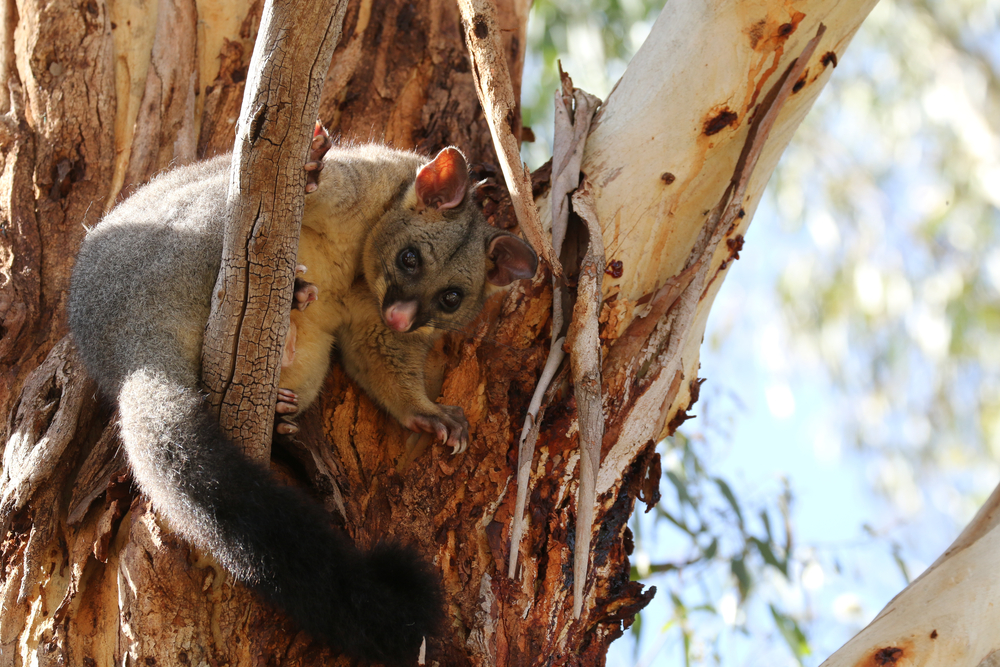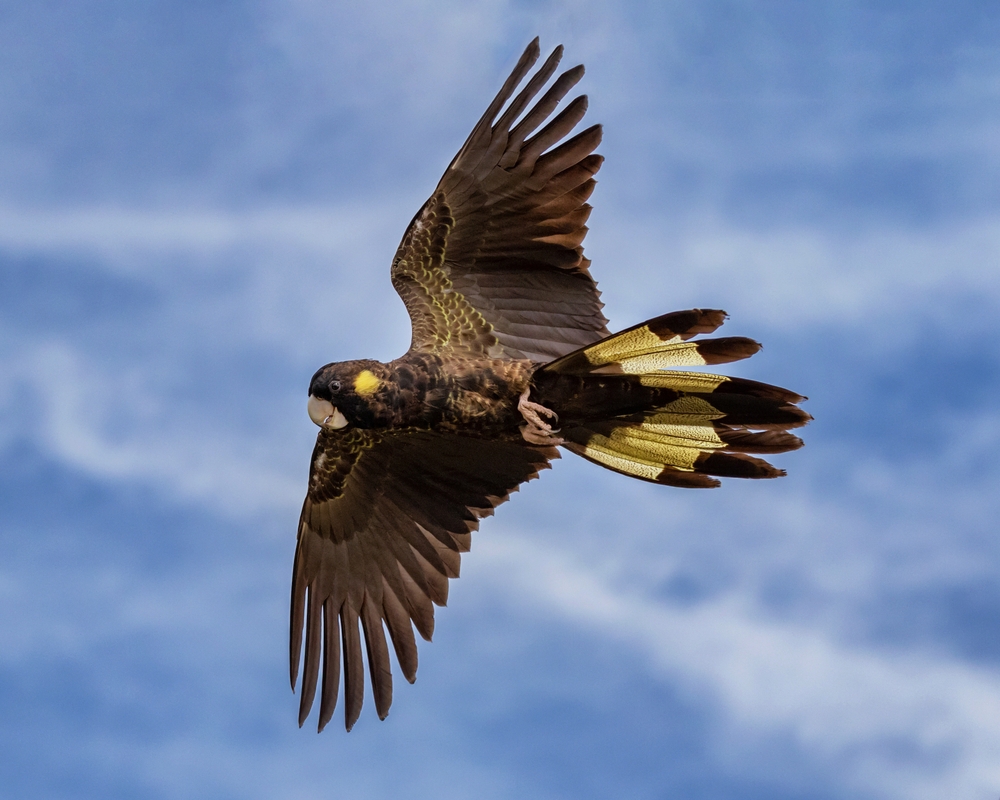| Common name | Common brushtail possum |
| Scientific name | Trichosurus vulpecula |
| Type | Marsupial |
| Diet | Leaves, shoots and flowers |
| Average lifespan | Between 10-12 years |
| Size | 55cm in size and between 1.5-4kgs in weight |
There are plenty of Australian tales of possums living in roof cavities or thundering along the back garden fence, and it’s the common brushtail possum that’s almost always responsible for visiting these suburban backyards to say hello. Well-adapted to urban life, the brushtail possum is the most widely distributed and commonly encountered of all Australian marsupials.
Averaging the same size as a domestic cat, the brushtail possum varies in colour and size, depending on where they live. Queensland brushtails are copper-coloured and measure in on the smaller side, whereas their Tasmanian relatives are black or grey and have adapted to the cooler climate by increasing their size and the density of their coat. The majority of brushtail possums are grey with a black band across the snout, a bushy tail, and pointy ears.

Found throughout Australia, the common brushtail possum lives in wooded areas and forests along Australia’s east coast, eastern South Australia and south-west Western Australia and inland areas along tree-lined creeks and rivers. They are also found in Tasmania, Northern Territory and New Zealand, where this flurry critter was introduced in 1840. The brushtail possum has modified its behaviour to happily live side-by-side with humans and are common within urban areas including campgrounds, suburban backyards, and city parklands.
Enjoying a diet of leaves, shoots and flowers, the brushtail possum has an ability to adapt to its surrounding vegetation and can even eat a range of highly toxic leaves and flowers without issue. With a preference for Eucalyptus flowers, the brushtail will also eat grasses, clover, garden fruits and in more urban areas, food scraps and waste. Natural foragers, the common brushtail is a curious sight during eating, as it often holds food like fruit or flowers within its two front paws whilst enjoying its meal.
Nocturnal, the common brushtail is active during night-time and spends most of the day sleeping within hollow logs, amongst branches, in a tree trunk or nestled into other darken areas. In urban environments, the brushtail has been known to seek shelter within house roofs, sheds, gutters or anywhere where an unblocked entrance provides access.
After a very short gestation period of 17 days, female possums give birth between March and November, with the single, furless newborn brushtail finding its way into the mother’s front pouch to latch onto one of two teats. The young possum feeds and grows within the pouch for the next five months, and then enjoys another two months attached to the mother’s back as she goes about her day, before becoming fully independant.
Brushtail possums remain within a distinct ‘home range’ and are mostly solitary creatures. These possums coat trees within their territory with a scent that is released from glands on the chest and communicate primarily through scent and sound. Sharp hisses, piercing screeches and guttural coughs can all be heard from the brushtail, particularly during breeding season or if one possum stumbles across another whilst crossing feeding areas.
The main threats to the common brushtail possum include dingoes, pythons, foxes and domestic and feral cats. Despite its abundance in numbers and being seen as a pest in some suburban areas, the brushtail possum is a protected species within Australia.













